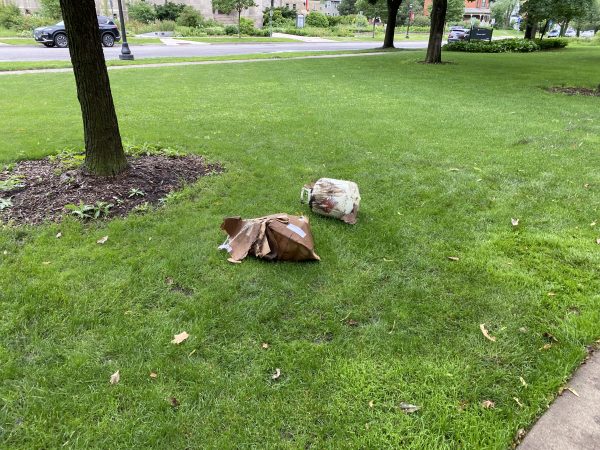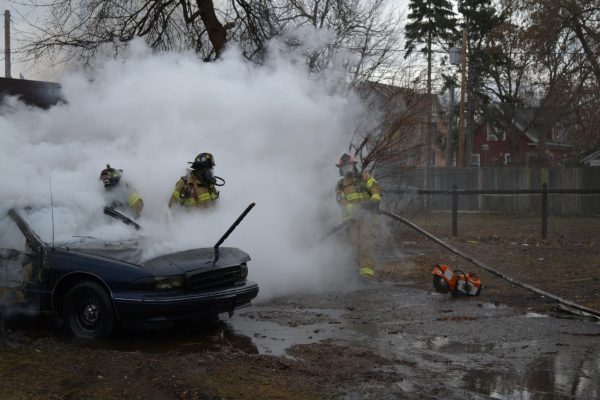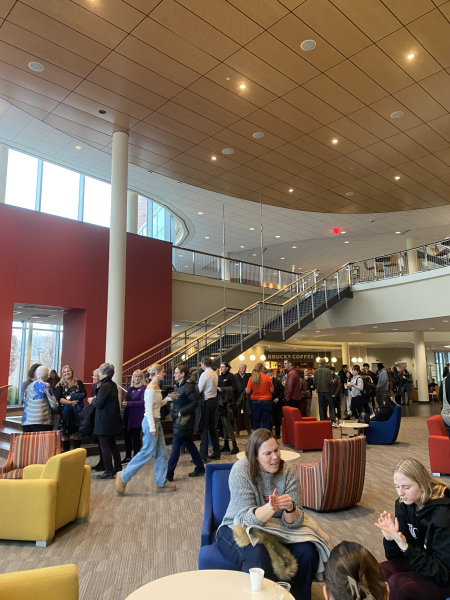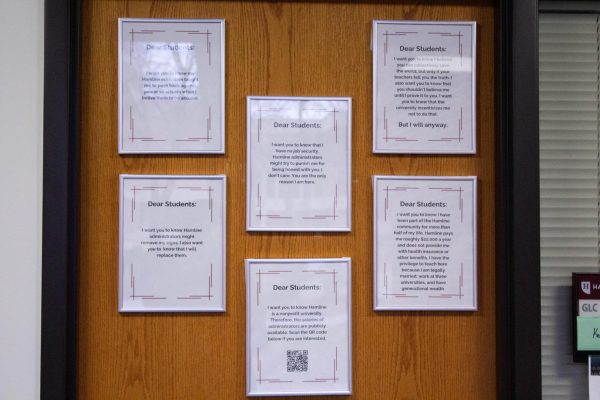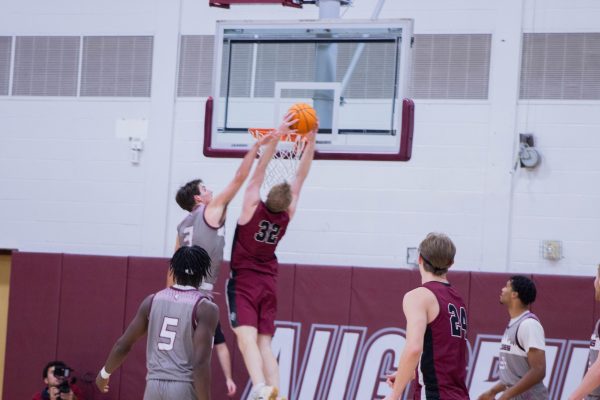Where do the children cross the road?
February 21, 2023
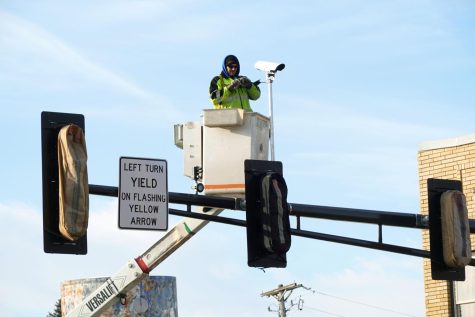
Snelling Ave. plays the role of a state highway and a major artery for traffic through the Midway. Within the Hamline community, the road can also act as a physical divide between neighbors, and navigating Snelling is a daily challenge.
Members of the Hamline-Midway community had been searching for a way to make the intersection at Snelling and Englewood safer for pedestrians for years, but those plans were repeatedly mired in the conflicted needs of district, city and state governments.
Last summer, community members were pleasantly surprised when crews from the city came to install a traffic signal.
“I literally was walking down the street, saw the work crew, took a picture and sent it to friends, to the Coalition, to Jessica [Kopp] and said, ‘Is this really happening?’” said Mike Reynolds, Professor of English at Hamline and a member of the Hamline Midway Coalition (HMC) Transportation Committee.
After a few more months of delays, the lights switched on a few weeks ago on Feb. 7, 2023.
Hamline and its neighbors have been directly involved in plans to improve the intersection since at least the late ‘90s.
Michael Price — the late sculptor, Professor of Art at Hamline and maker of the bronze statue of Bishop Hamline that still stands on campus — led a group of five art majors to prepare a design for a pedestrian bridge at Snelling and Englewood for the Mayor’s Design Forum in 1999.
“Snelling Avenue has become Snelling roulette,” Price told the Star Tribune at the time.
Although Price’s specific vision for a pedestrian bridge never became a reality, the new traffic light is a product of work driven from within this community to address the same concern.
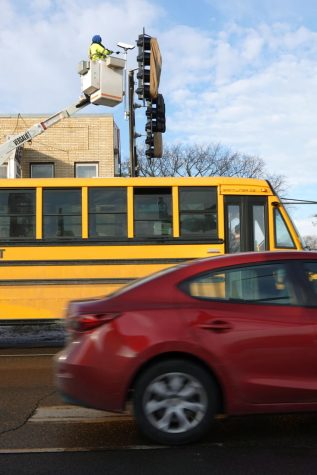
Every 10 years, each of Saint Paul’s 17 districts prepares a Neighborhood Plan to coordinate with the city and address the needs of local residents. The HMC heard from the community directly through surveys and public forums that getting across Snelling was an issue.
“The neighbors talked a lot about that,” Reynolds said. “Residents don’t always feel like they can get over there accessibly and clearly: particularly folks with young kids or folks who are a bit older or have any kind of walkability challenges.”
Since the closing of Galtier Elementary last summer, many families in the neighborhood faced the new challenge of sending their children to a school on the other side of a busy road. Karen McCauley, the Family Resource Coordinator at Hamline Elementary as well as a member of the Hamline Midway Coalition (HMC) Board of Directors, said that Hamline Elementary students who live just a few blocks away have been taking the bus to school to avoid crossing Snelling on foot.
McCauley is excited to see how the new intersection and crosswalk improve access for the community. “It’s just better for the whole block and accessibility to the building in general. More choices, more ways to get here more safely—I’m all for it,” McCauley said.
Through the Hamline-to-Hamline Collaboration, Hamline University and Hamline Elementary have shared partner programs since 1991 with college students visiting nearly every day for tutoring and elementary school students regularly visiting university classrooms and attending events at Anderson Center.
A large banner spanning the side of Hamline Elementary meant to highlight the two schools’ partnership includes an image of children crossing the road at Snelling and Englewood in a time before the traffic signal.
“We would have four adults and a big orange sign and people still wouldn’t stop,” said McCaulay. “Now there’s no ambiguity. You just stop.”
Spanning Hamline’s campus there are now three active traffic signals with crosswalks.

